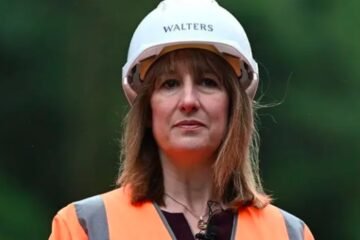Scotland’s energy ambitions just got a major jolt. The government has approved the UK’s biggest-ever pumped hydro project—1.8GW strong with 40GWh of energy storage capacity—planned for Loch Earba in the heart of the Highlands.
This isn’t just another infrastructure announcement. It’s a bold move, marking a key moment for the country’s renewable energy landscape.
Loch Earba’s Massive Storage Bet
Loch Earba might not be a household name, but it’s about to be at the centre of the UK’s clean energy transformation.
Gilkes Energy’s pumped hydro storage (PHS) scheme at the loch is the largest ever given the green light in Britain. If built to spec, it’ll be capable of storing enough energy to deliver full power—1.8GW—for a straight 22 hours. That’s 40GWh of energy tucked away in the hills.
That’s huge.
The project takes advantage of Loch Earba’s “ideal” geology and topography. The hills, the rock, the elevation—it’s all a perfect fit for this type of gravity-driven energy storage.
And gravity doesn’t go out of fashion.

Why Pumped Hydro Still Matters
Pumped hydro might sound old-school, especially in a world obsessed with lithium-ion batteries and solar tiles. But it’s still one of the most reliable, cost-effective ways to store energy at scale.
Here’s how it works, in plain terms:
-
When there’s excess electricity on the grid (usually from wind or solar), water is pumped uphill to a reservoir.
-
When demand spikes or supply drops, that water is released back downhill, spinning turbines and generating electricity on the way.
Simple, but powerful.
It helps balance the grid. Keeps the lights on when the wind isn’t blowing. And gives renewables room to grow without collapsing the system.
A Long Road Ahead for Gilkes
While the Scottish government’s planning consent is a big win, this doesn’t mean construction starts tomorrow.
Carl Crompton, managing director at Gilkes Energy, made it clear—this is just one checkpoint. The next step? Turning blueprints into reality. And reality needs money. Lots of it.
“We now begin the real work,” Crompton said, “transforming the consented project into a fully designed, tendered, and costed venture.”
Translation: Time to find investors.
This type of project isn’t cheap. And financing something of this scale—especially in the post-Brexit, inflation-pinched UK—isn’t going to be easy.
Highlands Economy Set for a Lift
Still, for the Highlands, this project could mean more than kilowatts.
David Tomb, project director, said the scheme would deliver a major economic boost to the region. Around 500 jobs are expected during construction, which could take up to seven years. That’s not just engineers and contractors—it’s accommodation, transport, catering, local suppliers.
One sentence says a lot:
“New opportunities for the Highland economy.”
There’s a feeling here that this isn’t just about power. It’s about presence. About saying that the Highlands aren’t just scenic—they’re strategic.
Comparing Scotland’s Two Pumped Giants
This isn’t the only pumped hydro project Gilkes has on the table.
Just a few weeks before this approval, the company submitted another proposal with SSE Renewables: the Fearna PSH project. It’s also 1.8GW, with 36GWh of storage, and planned for a site roughly 25km from Invergarry.
Here’s how the two stack up:
| Project Name | Location | Capacity (GW) | Storage (GWh) | Status |
|---|---|---|---|---|
| Earba PSH | Loch Earba | 1.8 | 40 | Approved (Apr 2025) |
| Fearna PSH | Near Invergarry | 1.8 | 36 | Application pending |
If both projects move forward, they could redefine Scotland’s position on the UK’s energy map.
Policy, Pressure, and Patience
Scotland has been chasing clean energy targets for years. Wind has carried much of the load, but without long-duration storage like this, it’s hard to get the full benefit.
The Earba project fits squarely into national plans to decarbonize and modernize the grid. But it also raises tricky questions.
How fast can planning permissions turn into shovels in the ground?
Will funding keep up with the political ambition?
Can pumped hydro compete with cheaper, faster-to-deploy battery farms?
These aren’t small questions. And right now, there aren’t easy answers.
Storage as a Safety Net
One thing’s for sure: without storage, the grid is on shaky ground.
Wind and solar are fantastic—when they’re working. But their unpredictability is the Achilles’ heel. Storage isn’t a luxury anymore. It’s a safety net.
And pumped hydro isn’t just storage—it’s deep storage. Hours and hours of backup, not just 15-minute bursts like some battery banks offer.
-
It’s the difference between stabilizing a city and just dimming the lights.
-
It’s the reason Scotland can push forward with its offshore wind mega-projects.
-
It’s one of the few technologies proven at this scale and lifespan.
That’s why projects like Earba matter.
Not flashy. Not futuristic. But solid.
The Long Game Has Started
This isn’t a headline-grabbing launch event. There are no ribbon cuttings yet.
But this approval signals a shift.
It’s a commitment to a long game—one where storage sits quietly behind the scenes, holding the entire system steady when everything else is in flux.
Earba might be quiet now. But in time, it could end up being one of the loudest players in the UK’s clean energy story.


















